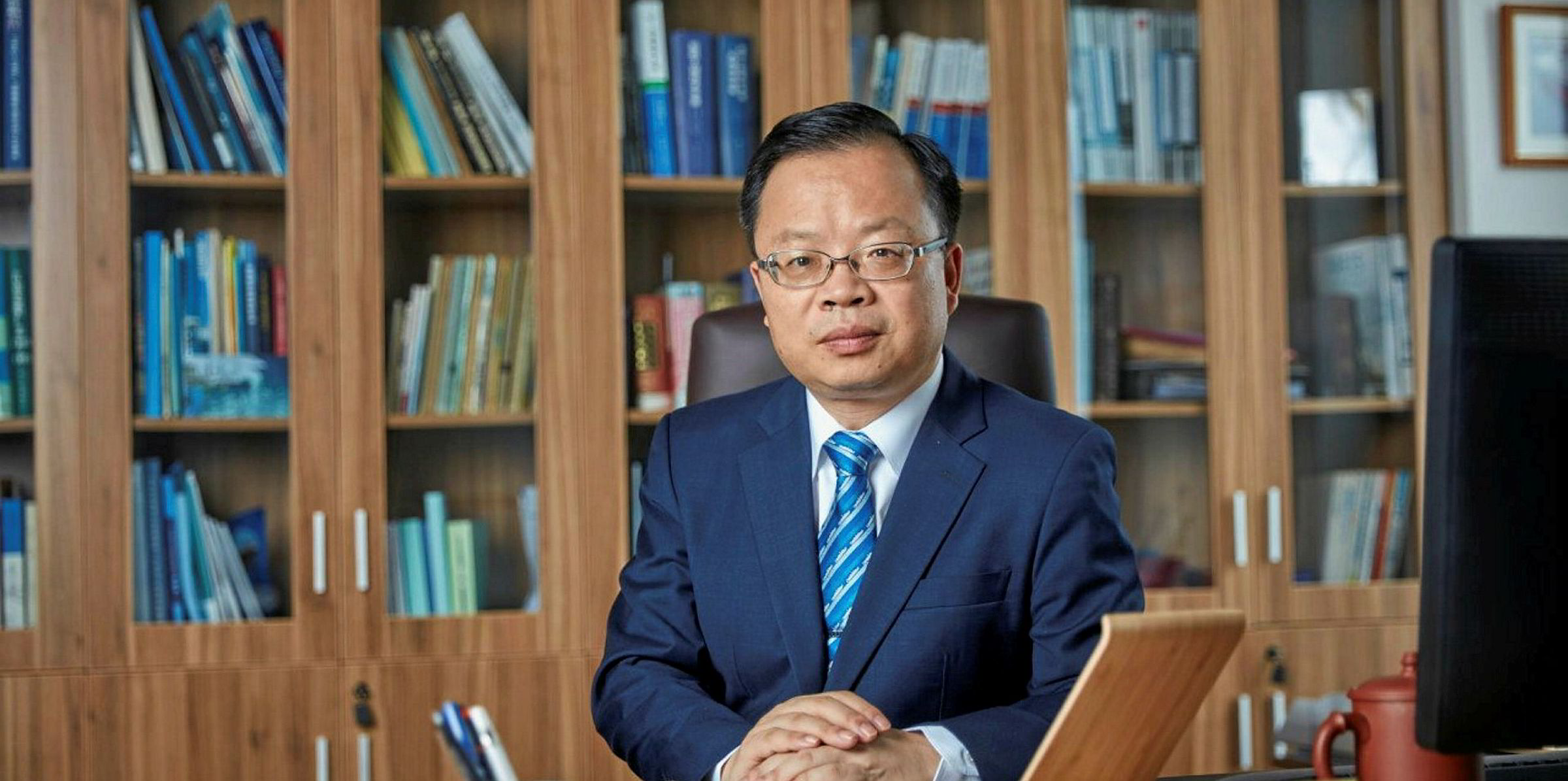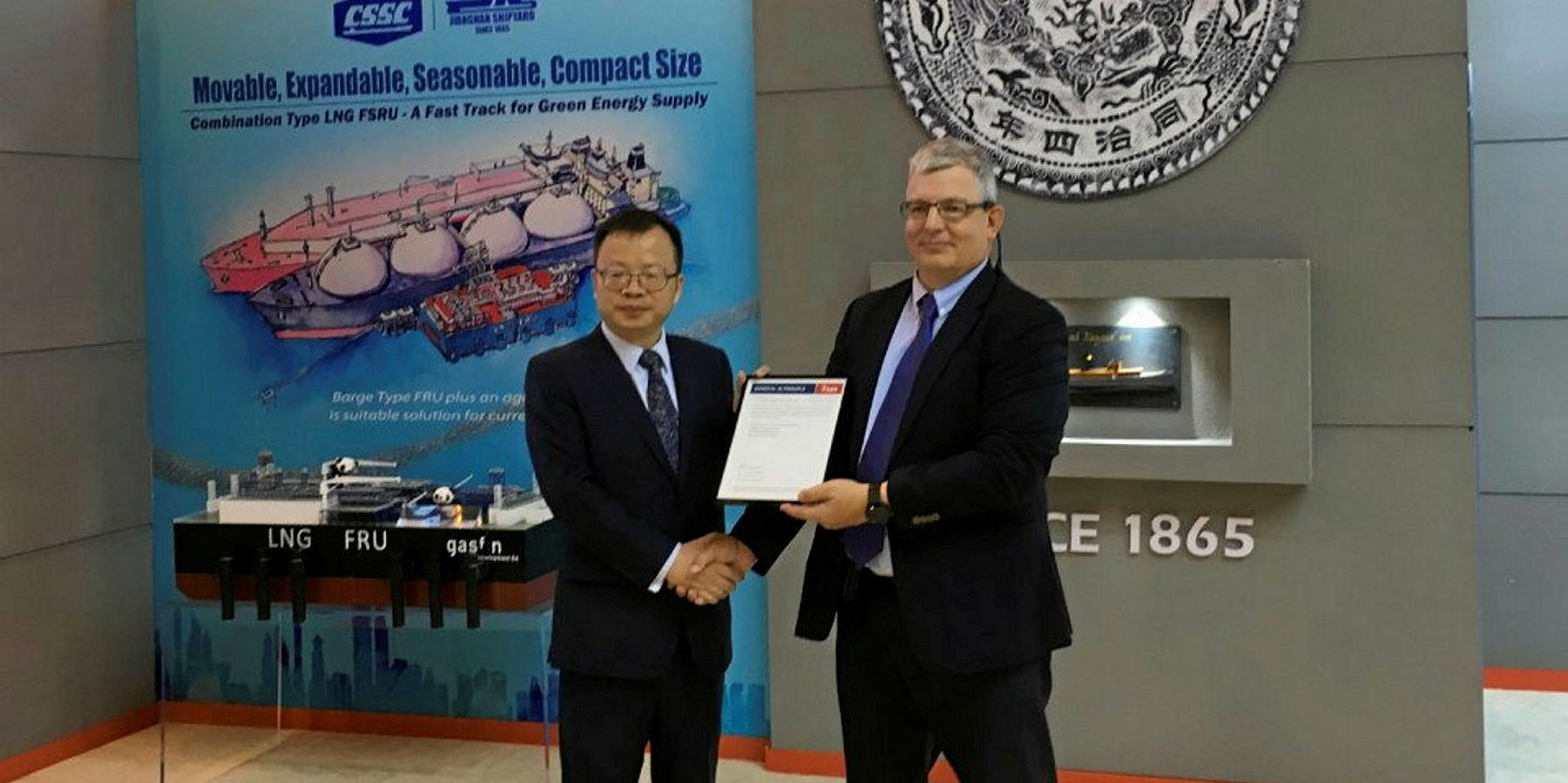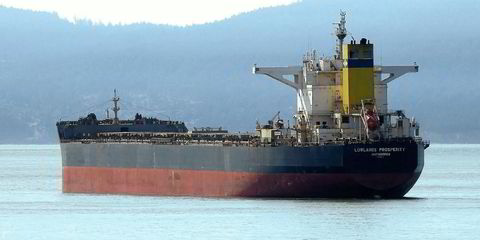China's state-owned Jiangnan Shipyard exceeded its 2019 ship sales target several months ahead of its deadline and is expecting more orders before the end of the year.
Sitting under the umbrella of China State Shipbuilding Corp (CSSC), Beijing gave Jiangnan a newbuildings target of CNY 5.5bn ($781.5m), up CNY 1bn year on year.
“We have accomplished the mission set by the group company,” Jiangnan's science and technology committee leader Hu Keyi said.
“To date, we have received CNY 11.5bn worth of newbuildings contracts — twice the amount that was set by CSSC. We are still expecting more orders.”
Interest in VLGC newbuildings and mega-containerships has significantly contributed to Jiangnan’s haul.
The yard received a total of six such orders: two vessels from Belgium’s Exmar and four from domestic shipping company Tianjin Southwest Maritime.
The companies are paying about $74m each for the LPG-fuelled gas carriers.
On containerships, CSSC's leasing arm — CSSC (Hong Kong) Shipping Leasing — signed five dual-fuel, 15,000-teu vessels for about $130m each. They were booked on the back of long-term charter contracts with French liner CMA CGM.
Triple-fuel scoop
Jiangnan also bagged a rare export order for three 3,600-ceu, pure car truck carrier (PCTC) newbuildings from Norway’s UECC. The hybrid PCTCs, with batteries, cost slightly less than $50m each and are slated for delivery in 2021.
“These [PCTCs] are not dual-fuel vessels but triple fuel,” Hu said. “They can be powered by electric batteries, LNG and diesel.”
These [PCTCs] are not dual-fuel vessels but triple fuel,” Hu said. “They can be powered by electric batteries, LNG and diesel
Hu Keyi
UECC’s order marked Jiangnan’s return to the car-carrier sector after a 30-year absence.
Hu said his yard was the first in the country to build car carriers but it left the segment after incurring losses — due to low ship prices — when building four 4,000-ceu vessels for a German shipping company.
“The shipbuilding price of car carriers was not good and there was keen competition from shipyards," Hu said. "At that time, we were also putting our focus on gas-related ships and feeder containerships.
“We are now making a comeback to this segment because of our shipyard facility and an increase in shipbuilding prices. Our shipbuilding capability has also improved over the years.”

Jiangnan was relocated from Shanghai to Changxing Island 11 years ago. In addition to its own shipyard, it also controls Shanghai Jiangnan Changxing Heavy Industry, which is building mega-boxships and VLGCs.
In addition, Jiangnan has a strong reputation for building gas carriers. It is the first yard in the country to build gas tankers and the only one that is constructing VLGCs. It has delivered almost 30 gas ships and has an order backlog of 15 VLGCs.
LNG debut
Last year, Jiangnan broke into the LNG arena by winning a contract for two 80,000-cbm newbuildings from Chinese trader Jovo Group.
The so-called Sino-Flex vessels are an in-house design, compliant with IMO Tier III NOx regulations and will meet the latest version of the 2016 International Code of the Construction and Equipment of Ships Carrying Liquefied Gases in Bulk — also referred to as the IGC Code.
The LNG carriers will have a membrane-type cargo tank fitted with a GTT Mark III flex cargo-containment system.
The yard is also keen to build large LNG ships. It is one of the seven parties involved in the development of a 220,000-cbm LNG carrier design with a Mark III system.
“Jiangnan is starting off with the 80,000-cbm LNG ships, since the size of the vessel is similar to VLGCs,” Hu said. “Being half the size of large LNG carriers, it represents half the risks. Once we build up a record on midsize LNG carriers, it will be easier for us to progress to larger vessels.”
A trained naval architect, Hu said one highlight was that Jiangnan has developed two new ship designs: an ultra large ethane carrier — the 150,000-cbm Magnolia — and an LPG-fuelled, 91,000-cbm VLGC.
The Magnolia is a tailor-made vessel that will be fitted with four GTT Mark III membrane tanks for transporting ethane from US producers to China.
The Panda 91T has a maximum cargo capacity of 98,000 cbm and is the largest VLGC to date. It is designed to allow the ship to use LPG as fuel for a round trip from the US to China, or the US to Africa, without sacrificing cargo space.
Moving forward, Hu would like his company to develop type-B tank gas carriers and develop their own gas cargo-handling systems.






